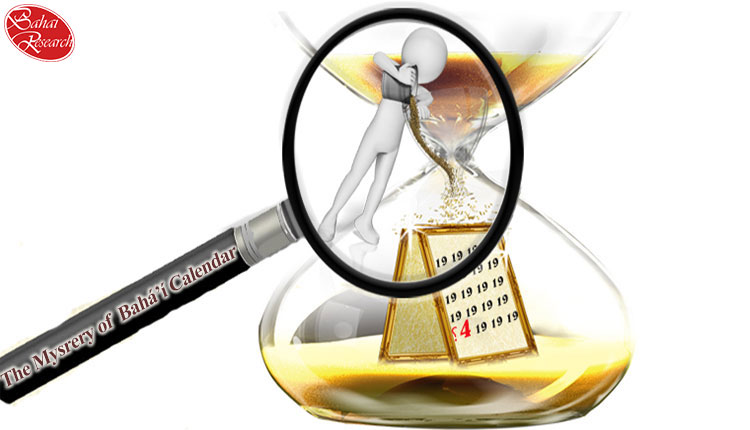Stupidity of Nineteen Days Months in Baha’i Faith
19 days month in Baha’i Faith is totally unscientific and absurd. Then, to make a year of 365 days they have made a stupid adjustment of 4 days- also called as intercalary days. Why this adjustment is done?
If at all Baha’i Faith is a religion of God, then why they have deviated from 12 months calendar when all other divine religions have 12 months year. The debate is open for discussion. The only apparent reason for converting the number of months to 19 is due to the significance of number 19 in Baha’i Faith (as the number of early converts were 19).
Ayyam-i-Ha
Ayyam-i-Ha refers to a period of four or five intercalary days in the Baha’i calendar, where Baha’is celebrate the Festival of Ayyam-i-Ha [1].
The four or five days occur in between the 18th and 19th months of the calendar from February 26 to March 1 and allow for the Bahá’í calendar to be synchronized with the solar year with regular years of 365 days, and leap years of 366 days. (According to the definition of intercalary days in the “Oxford Companion to the Year” four of the five days are “epagomenal days” added to make the number of a calendar’s days equal to the number of days in a year, and only the fifth day of Ayyám-i-Há is an intercalary day.)
History
The Báb, the founder of the Bábí Faith, instituted the Badi calendar in the Persian Bayán with 19 months of 19 days each and a period of intercalary days to allow for the calendar to be solar. The introduction of intercalation marked an important break from Islam, as under the Islamic calendar the practice of intercalation had been specifically prohibited in the Qur’an [2].
The Báb did not, however, specify where the intercalary days should go. Bahá’u’lláh, who claimed to be the one foretold by the Báb, confirmed and adopted the Badi calendar in the Kitáb-i-Aqdas, his book of laws. He placed the intercalary days before the fasting month of `Alá, the nineteenth and last month, [3] and gave the intercalary days the name “Ayyám-i-Há” or “Days of H”.
Symbolism and celebration
The nineteen months of the Bahá’í calendar are named after the attributes of God [4]. Ayyám-i-Há, which means the “Days of Há” & mdash; Há is the Arabic letter corresponding to the English H & mdash; commemorates the transcendence of God over his attributes since its name “Ha” has been used a symbol of the “essence of God” in the Baha’i holy writings [5]. Under the Arabic abjad system, the letter Há has the numerical value of five, which is equal to the maximum number of days in Ayyam-i-Há.
During the Festival of Ayyám-i-Há Bahá’ís are encouraged to celebrate God and his oneness by showing love, fellowship and unity. In many instances Baha’is give and accept gifts to show forth the love, and it is sometimes seen as a “Baha’i Christmas” held two months late. It is also a time of charity and goodwill and Bahá’ís often participate in various projects of a humanitarian nature [4].
Being unscientific and unreal of Baha’i calendar is detailed in John Taylor’s article. As a Baha’i, he mentioned the roots of Badí’ history, and compares it with the other ones. It’s easy to understand that the Baha’is guardians (Báb and Baha’u’llah) try to Sanctification in the public mind and show off themselves innocent. As they need some materials, clinging to the sanctities of the Abrahamic religions. Today, we can see the episodes of justification among the Baha’i missionaries. John Taylor made clear these stupid justifications about Badí’ history and Ayyam-i-Ha in Baha’i Faith.
The complete article is uploaded in the following link, click here and continue your study:
 Stupidity Of Nineteen Days Months in Baha'i
Stupidity Of Nineteen Days Months in Baha'i

